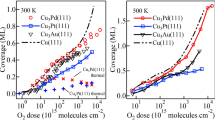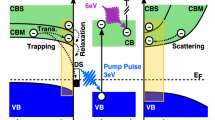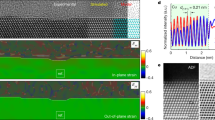Abstract.
Image-potential states on Cu (117) and Cu (119) surfaces were studied by means of two-photon photoelectron spectroscopy. The regular array of steps generates a lateral potential on the vicinal surfaces, which modifies the surface-electronic structure. Compared to Cu (001), the band bottom of the n=1 image-potential states shifts by 40 meV to lower binding energy. The periodicity of the step-induced superlattice manifests itself as back-folding of the n=1 and 2 dispersion bands. At the surface Brillouin zone boundary a mini-gap opens with a width of 135 meV for the first image-potential state on Cu (117). On the vicinal surfaces the lifetime of the image-potential states is reduced by a factor of three as compared to Cu (001). This is attributed to a narrowing of the surface-projected bulk-band gap when projected along the [11n] direction. While the dephasing rate of the first image-potential state is close to the decay rate, higher members of the Rydberg-like series show negligible dephasing.
Similar content being viewed by others
Author information
Authors and Affiliations
Additional information
Received: 16 October 2001 / Revised version: 9 April 2002 / Published online: 6 June 2002
Rights and permissions
About this article
Cite this article
Roth, M., Pickel, M., Wang, J. et al. Image-potential states on stepped Cu (001) surfaces . Appl Phys B 74, 661–664 (2002). https://doi.org/10.1007/s00340-002-0919-3
Published:
Issue Date:
DOI: https://doi.org/10.1007/s00340-002-0919-3




